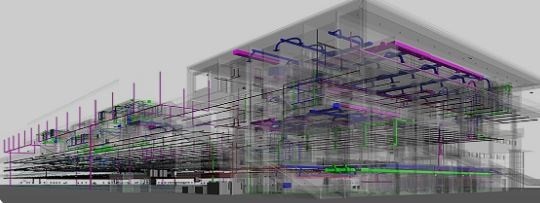The Power of Building Automation Systems in MEP Design
Introduction
As the Sunshine State continues to thrive, the construction industry in Florida is booming. With new Florida’s construction industry is thriving. New developments are popping up across the state—from high-rise buildings to expansive office complexes. This growth fuels the economy, but it also presents new challenges. Architects, engineers, and builders must now meet rising demands for modern, efficient, and sustainable spaces.
One solution gaining momentum is the use of building automation systems (BAS) in MEP (Mechanical, Electrical, and Plumbing) design. BAS streamlines construction, improves energy efficiency, and enhances occupant comfort. This blog explores how BAS is transforming commercial construction in Florida.
1. The importance of building automation systems in commercial construction
In today’s competitive construction market, BAS is essential. It improves operational efficiency and simplifies the integration of HVAC, lighting, and security systems. This integration allows real-time control and monitoring of building functions.
Florida’s humid climate makes BAS even more important. Automated control over temperature, lighting, and humidity helps reduce energy use and extend equipment life. It also creates a comfortable indoor environment and lowers maintenance costs by detecting problems early.
2. The current state of commercial construction in Florida
Florida’s cities, like Miami and Orlando, are seeing a wave of commercial construction. But with this growth comes complexity. Designers must now deal with tighter budgets, evolving regulations, and environmental concerns.
Traditional methods often fall short. Builders now rely on smart systems like BAS to meet modern demands. BAS helps speed up projects, improve accuracy, and cut costs—making it a critical tool in Florida’s construction landscape.
3. Challenges in the construction process
The construction industry is notorious for its complexity, and the commercial construction sector in Florida is no exception. From the outset, building projects can be fraught with challenges, from budget constraints to logistical hurdles, and even environmental concerns. In the world of Mechanical, Electrical, and Plumbing (MEP) design, the process is often characterized by manual errors, miscommunications, and delays, which can lead to costly rework, delays, and even project abandonment.
One of the most significant challenges in the construction process is the lack of coordination between architects, engineers, and contractors. This can result in conflicts, mistakes, and rework, which ultimately drive up costs and extend project timelines. Additionally, the sheer complexity of MEP systems, with multiple pipes, wires, and ducts, can lead to errors and inconsistencies, making it difficult to ensure that the final product meets the desired specifications and quality standards.
4. What Are Building Automation Systems in MEP Design?
A building automation system is a central platform that monitors and controls building functions. It connects HVAC, lighting, plumbing, and security systems, enabling centralized control.
Think of BAS as a command center. It gathers data from sensors and allows real-time adjustments. This setup helps reduce energy usage, lower costs, and improve the occupant experience.
5. Benefits of Building Automation Systems in MEP Design for Florida’s Commercial Construction
Florida’s hot and humid climate makes energy efficiency a top priority. BAS supports this goal by integrating building systems and automating operations. This creates a more efficient and comfortable environment. Building owners benefit from lower energy bills, reduced maintenance, and improved tenant satisfaction. BAS enhances air quality, ensures temperature consistency, and cuts downtime. It also boosts ROI, making it a smart investment for any commercial project.
This results in significant energy savings, reduced maintenance costs, and a more sustainable and environmentally friendly building. Moreover, BAS enables improved occupant satisfaction, thanks to precise temperature control, improved air quality, and enhanced lighting and ventilation systems. By streamlining operations, reducing downtime, and increasing overall efficiency, BAS can help Florida’s commercial construction projects achieve remarkable returns on investment, making it an essential component of modern building design.
6. How Building Automation Systems in MEP Design Improve Energy Efficiency
Florida builders are increasingly turning to building automation systems in MEP design to meet environmental standards and reduce energy consumption. One effective solution is the integration of Building Automation Systems (BAS) into the design of commercial buildings. By incorporating BAS into the MEP (Mechanical, Electrical, and Plumbing) design, Florida’s commercial construction projects can significantly improve energy efficiency.
A well-designed BAS system can monitor and control various building systems, such as lighting, temperature, and humidity, to optimize energy consumption and reduce waste. This can be achieved through the use of sensors and automation technology, which allow for real-time monitoring and adjustment of building systems to optimize energy usage. For instance, a BAS system can automatically adjust lighting levels based on natural daylight availability, reducing the need for artificial lighting. Additionally, it can also optimize heating and cooling systems to maintain a consistent temperature, reducing energy consumption and carbon emissions.
7. How BAS can reduce labor costs
As construction projects continue to grow in complexity, building automation systems (BAS) have emerged as a valuable tool in streamlining the commercial construction process in Florida. By integrating various building systems, such as HVAC, lighting, and security, into a single, centralized platform, BAS can significantly reduce labor costs. One of the most notable benefits of BAS is the ability to automate routine maintenance tasks, freeing up technicians to focus on more complex and high-value tasks.
For instance, with a BAS, routine tasks such as scheduling HVAC maintenance, monitoring energy consumption, and adjusting lighting levels can be handled automatically, eliminating the need for manual intervention. This not only reduces labor costs associated with these tasks but also minimizes the risk of human error, ensuring that the building systems are running at optimal levels.
8. Design considerations for implementing BAS in Florida’s commercial construction
When it comes to implementing Building Automation Systems (BAS) in Florida’s commercial construction, it is crucial to consider several key factors during the design phase. A well-designed BAS can significantly enhance the efficiency, sustainability, and overall occupant experience of a building. In Florida’s hot and humid climate, it’s particularly important to ensure that the system is designed to handle the unique demands of the region’s weather conditions.
One of the primary considerations is the selection of the right equipment and materials. Florida’s subtropical climate means that buildings are subject to high humidity, salt air, and intense sunlight, which can lead to corrosion and premature wear on equipment. Therefore, it’s essential to specify equipment that is designed to withstand these conditions, such as using corrosion-resistant materials and equipment with high humidity ratings.
9. Integration with other systems: HVAC, lighting, and energy management
In today’s fast-paced and ever-evolving commercial construction landscape, building automation systems (BAS) are no longer a luxury, but a necessity. A well-designed BAS can seamlessly integrate with various systems, such as HVAC, lighting, and energy management, to create a harmonious and efficient space that maximizes productivity, reduces costs, and enhances the overall occupant experience. By integrating these systems, architects, engineers, and contractors can create a truly holistic approach to building design, where every component works in concert to create a cohesive and effective whole.
For instance, a BAS can seamlessly integrate with a building’s HVAC system to optimize temperature and humidity levels, ensuring a comfortable and healthy indoor environment for occupants. This integration can also extend to lighting systems, which can be programmed to adjust brightness and color based on the time of day, natural light availability, and occupancy levels. Additionally, energy management systems can be integrated with the BAS to monitor energy usage in real-time, providing valuable insights for energy conservation and cost reduction.
10. Case studies: successful implementation of BAS in Florida’s commercial construction
Several Florida projects show the value of BAS. In Miami, a high-rise office building installed a BAS that linked HVAC, lighting, and energy systems. The result? A 30% cut in energy costs and improved air quality.
In Tampa, a hospital used BAS to reduce energy waste and increase patient comfort. These examples prove that BAS delivers real results in comfort, efficiency, and savings. For instance, a recent project in Miami’s downtown area saw the implementation of a BAS system in a high-rise office building. The system integrated HVAC, lighting, and energy management systems, allowing for real-time monitoring and control of the building’s environmental conditions.
This resulted in a significant reduction in energy consumption, a 30% decrease in energy costs, and a notable improvement in indoor air quality. In another case study, a BAS system was installed in a Tampa hospital, which enabled the facility to optimize its energy usage, reduce energy waste, and improve patient comfort.
Conclusion: The future of commercial construction in Florida with BAS
Florida’s commercial construction industry is evolving fast. Building automation systems are leading the change. BAS offers a smarter way to manage energy, cut costs, and improve the building experience.
By embracing BAS, developers can future-proof their projects. These systems meet modern needs and prepare buildings for the demands of tomorrow. The result? More efficient, sustainable, and successful commercial spaces across the Sunshine State.
Learn more: https://www.nrel.gov/docs/fy22osti/82750.pdf

















































